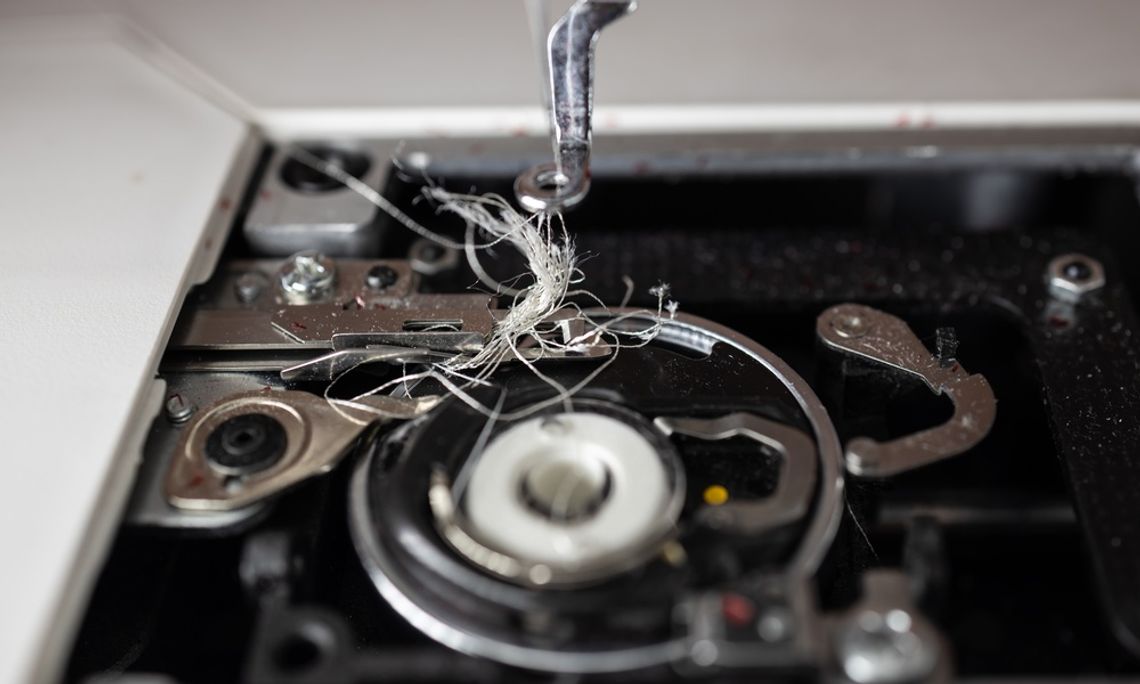There are few things more frustrating to a sewist than the machine breaking down in the middle of a project. Unfortunately, no matter how much you invest, even the most reliable sewing machines can encounter hiccups that halt your creativity.
Luckily, most issues are simple to troubleshoot and fix with a little know-how. This guide will walk you through the most common sewing machine problems and how to fix them so you can get back to stitching.
Skipped Stitches
Skipped stitches can throw off your entire project, leaving you scratching your head. A dull or damaged needle typically causes this issue, so be sure to swap it out for a fresh one that suits your fabric type.
For example, a ballpoint needle works wonders on knits, while a sharp needle is ideal for woven fabrics. If that doesn’t solve it, ensure that you’ve inserted the needle correctly—it should sit all the way up and face the proper direction as specified in your manual. Finally, double-check that your machine settings, like stitch length and type, align with your fabric and project needs.
Jammed Bobbin Case
A jammed bobbin case can feel like a disaster, but it’s often a quick fix. First, turn off your machine and gently remove the fabric from under the presser foot. Open the bobbin area, being mindful not to pull at any loose threads too forcefully. Then, remove the case and clear out any thread tangles or lint.
Once clean, re-insert the bobbin. Also, confirm that the tension on the bobbin case isn’t too tight, as this can lead to repeated jams. However, you should always note that the same problem repeating itself, no matter how simple the fix, may indicate that you need a professional repair service or even replacement.
Needle Breaking
A broken needle can be startling, and it usually points to a mismatch between the needle and your project. Check that the needle you’re using is the right size and type for your fabric. Heavyweight materials like denim require a strong needle, such as a size 90/14 or higher.
Additionally, avoid forcing the fabric through the machine, as this can put undue stress on the needle. If you consistently experience breakage, inspect your presser foot and feed dogs for damage and verify that you securely fastened your needle.
Thread Tension Issues
Are your stitches too tight or too loose, causing puckering or gaps in your fabric? Don’t worry—you’re not alone! Thread tension issues are among the most common sewing machine problems, and your first step is to check your machine’s tension settings. Begin by re-threading both the upper thread and the bobbin, as incorrect threading is often the culprit.
Next, adjust the tension dial in small increments, testing on scrap fabric to find the sweet spot. Still not working? Clean out any lint or debris around the tension discs, as build-up can interfere with the thread’s smooth flow.
Remember, every sewist faces hiccups along the way—it’s all part of the creative process! With this guide, you can tackle those pesky machine challenges and keep your projects moving forward.


Comment
Comments